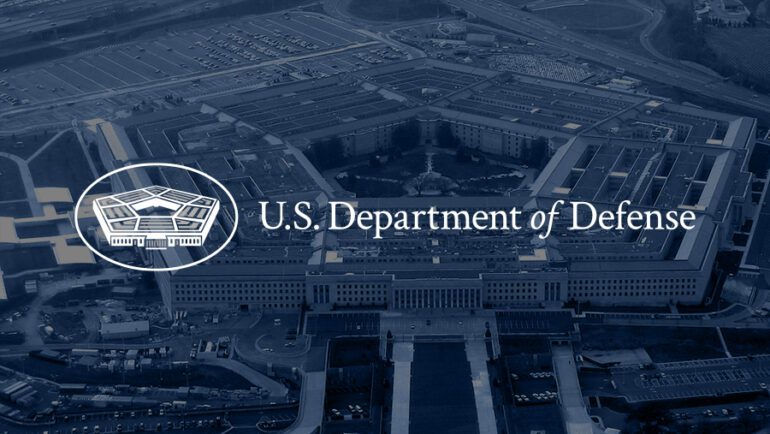TL;DR:
- The US Department of Defense has released an updated strategy focusing on data analytics and artificial intelligence (AI).
- This strategy aligns with the Biden administration’s increased investment in AI, pattern recognition, and autonomous technology, including drones.
- The Pentagon emphasizes the need to accelerate the adoption of advanced data and AI technologies.
- Key goals include improving data sets, infrastructure, external partnerships, and overcoming internal barriers.
- A Chief Data and AI Officer (CDAO) role was established in 2021 to oversee AI and analytics efforts.
- Generative AI use within the military is controversial, but humans will retain control over lethal decisions.
- Directive 3000.09 governs the development of semi-autonomous and autonomous weapons.
- The Pentagon acknowledges the growth of AI, including large language models like ChatGPT, but notes that much innovation occurs outside the government.
- The Department of Defense identifies over 180 potential AI applications, with hundreds of AI-related projects underway.
- Task Force Lima evaluates generative AI for national security.
- An AI summit was attended by Vice President Kamala Harris, and an executive order on AI security and privacy was issued.
- The Pentagon requested $1.4 billion for AI in fiscal 2024.
Main AI News:
The US Department of Defense has unveiled an updated strategy outlining its commitment to harnessing the potential of data analytics and artificial intelligence (AI) technologies. This strategic move aligns with the administration’s focus on increased investment in AI, advanced pattern recognition, and autonomous systems, including drones.
This revamped strategy builds upon a blueprint initially introduced in 2018 when the Pentagon foresaw AI’s transformative impact on various industries and national security. However, it now takes into account the remarkable growth of AI within the defense sector, as highlighted by Chief Digital and AI Officer Craig Martell.
Martell emphasized the strategy’s aim to expedite the adoption of advanced data, analytics, and AI technologies, providing decision-makers at all levels of the department with the data-driven insights needed to make quicker, more informed choices. Speaking to reporters at the Pentagon on November 2, he noted the unprecedented opportunities presented by these technologies.
Among the key objectives outlined in the strategy are the enhancement of data sets, infrastructure improvement, increased collaboration with external organizations, and the removal of internal obstacles that often hinder the department’s ability to adopt technology at the desired pace.
This document also sheds light on the Pentagon’s internal structuring for effective AI governance. In 2021, the role of Chief Data and AI Officer (CDAO) was established, consolidating oversight of all AI and analytics initiatives, including the Joint Artificial Intelligence Center, Defense Digital Service, Advana data platform, and the Chief Data Officer’s responsibilities.
Deputy Secretary of Defense Kathleen Hicks, emphasizing the urgency of this leadership role, stated, “The Secretary and I are ensuring CDAO is empowered to lead change with urgency” during a briefing at the Pentagon.
However, the utilization of generative AI within the military remains a topic of controversy. While it can streamline routine tasks and simplify processes like file retrieval and data retrieval, it has also been linked to cyberattacks, spoofing attempts, and disinformation campaigns. Hicks stressed that humans will retain responsibility for decisions involving the use of lethal force, ensuring that AI’s role in national security aligns with ethical standards.
The development and deployment of semi-autonomous or fully autonomous weapons are governed by Directive 3000.09, initially signed a decade ago and updated in January of this year. This directive aims to minimize the risks associated with autonomous weaponry and firepower but does not extend to the realm of cyber warfare, where autonomous capabilities are gaining prominence.
Despite rapid advancements in AI, driven in part by the proliferation of large language models like ChatGPT, these commercial AI programs have not yet met the department’s standards. Hicks acknowledged that much of the innovation in this field is occurring outside of the Department of Defense and government circles.
Nonetheless, Hicks highlighted that the Pentagon is already leveraging AI models developed in-house. These models, trained on Pentagon data, are at various stages of maturity and are actively being tested and integrated into daily workflows.
If these models become operational, they could address a wide range of challenges. Hicks revealed that the Department of Defense has identified “over 180 instances” where AI could offer significant benefits, from analyzing battlefield assessments to summarizing classified data sets. As of early 2021, the Defense Department was overseeing more than 685 AI-related projects, as disclosed by the Government Accountability Office.
Task Force Lima, under the purview of the CDAO, was established earlier this year to evaluate and guide the application of generative AI for national security purposes.
This announcement coincides with an AI summit in London attended by Vice President Kamala Harris. It follows the issuance of an executive order on AI security and privacy by the Biden administration. Despite efforts by Senate Majority Leader Chuck Schumer, Congress has yet to take legislative action on this matter.
For fiscal year 2024, the Pentagon has requested $1.4 billion in funding for AI initiatives, with the current continuing resolution maintaining funding levels from the previous fiscal year until mid-November.
According to data made public by the Government Accountability Office, the Defense Department was overseeing more than 685 AI-related ventures as of early 2021. The Army led the way with at least 232 such projects, while the Marine Corps was involved in at least 33.
Conclusion:
The Pentagon’s enhanced data and AI strategy reflects a significant commitment to harnessing advanced technologies in the defense sector. This strategy, aligned with the Biden administration’s priorities, presents substantial opportunities for businesses operating in AI, data analytics, and autonomous technology sectors. Companies should monitor developments in this space closely, as the Department of Defense seeks to leverage AI for various applications, potentially creating partnerships and growth opportunities in the market.

